Longan is a tropical tree that produces edible fruit. It’s one of the better known tropical members of the soapberry family Sapindaceae, to which the lychee also belongs to. Take a look below for 25 more fun and interesting facts about longan.
1. Longan is commonly associated with lychee, which is similar in structure but more aromatic in taste.
2. The longan, which means “dragon eye” in Cantonese, got its name from the fact that it resembles an eyeball when its shelled.
3. The full ripened, freshly harvested longan has a bark like shell, thin, and form, making the fruit easy to peel by squeezing the pulp out as if one is cracking a sunflower seed.
4. When the shell of a longan has more moisture content and is more tender, the fruit becomes less convenient to shell.
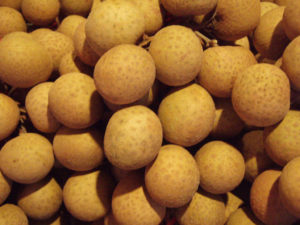
5. The tenders of the longan shell varies due to their premature harvest, variety, weather conditions, or transport and storage conditions.
6. Longan grows in tropical areas, with dry autumns and frost-free winters.
7. The majority of globally consumed longan originates from Southeast Asia.
8. Longan is a medium sized tree that can reach 20 to 23 feet in height. It has a roundish crown and a corky bark.
9. It produces dark green, shiny, leathery, pinnate leaves made up of 6 to 9 oval leaflets with wavy margins and pointed tips. The leaves are alternately arranged on the branches.
10. Longan produces dense clusters of small, brownish-yellow to yellowish-green flowers. Each cluster contains three types of flowers: functionally male, functionally female and hermaphroditic.
11. Longan blooms during spring. Male flowers open first, followed by female flowers and finally the hermaphroditic flowers, which function as male flowers. Strictly organized maturation and opening of flowers prevent self-pollination.
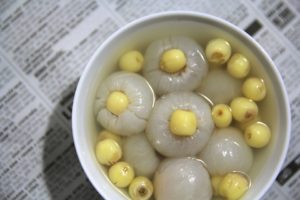
12. It produces large, drooping clusters of cherry-sized drupes. The fruit is oval or round in shape and has a thin, brittle, light brown shell on the surface and grayish-white, translucent flesh which surrounds the centrally positioned large, black seed with a white ovoid-shaped mark.
13. Longan harvest takes place from the mid to late summer.
14. The fruit is a rich source of vitamins A and C and minerals such as iron, phosphorus, potassium and magnesium.
15. Longan flesh looks like a peeled grape. It has a pleasant, sweet taste which resembles a mixture of musk, spruce and gardenia. It can be eaten in fruit salads, ice creams, smoothies, cocktails and syrups.
16. Fresh, dried and canned longan is often used for the preparation of various sweet and savory dishes.
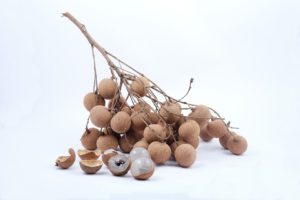
17. The pit can’t be easily removed from the longan, which increases the popularity of the stone free varieties of longan on the market.
18. The fruit is very popular in Asia, especially Thailand, where it’s also known as “lam-yai.”
19. It’s used in the treatment of insomnia, fatigue, depression and irritability. It also accelerates healing of a wound, improves blood circulation and absorption of iron and keeps the cardiovascular system, skin, gums and teeth healthy.
20. In ancient Vietnamese medicine, longan seed was used to stop the bleeding and absorb the venom after a snake bite. This is ineffective, but still commonly used today.
21. The longan is believed to have originated from the mountain range between Myanmar and southern China. Other reported origins include India, Sri Lanka, upper Myanmar, north Thailand, Cambodia, north Vietnam and New Guinea.
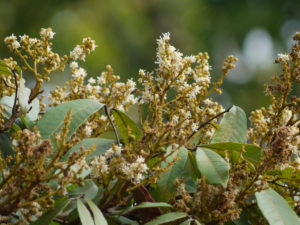
22. The earliest record of the existence of longan draws back to the Han Dynasty in 200 BC. The emperor had demanded lychee and longan trees to be planted in his palace gardens in Shaanxi, but the plants failed.
23. Despite its long success in China, the longan is considered to be a relatively new fruit to the world.
24. The first European acknowledgement of the fruit was recorded by Joao de Loureiro, a Jesuit botanist, in 1790.
25. Dried longan is believed to have an effect on relaxation in Chinese food therapy and herbal medicine.

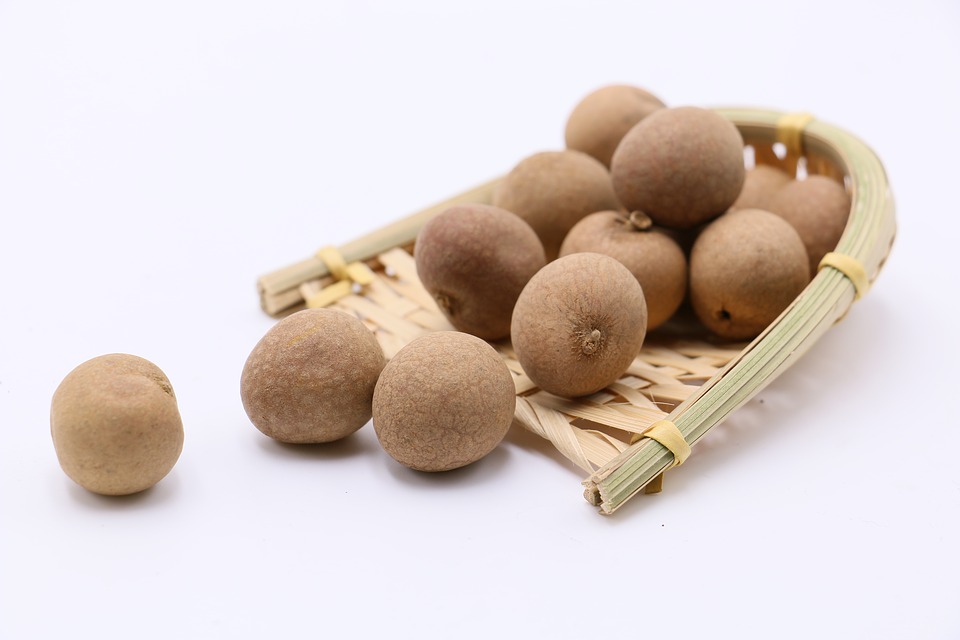
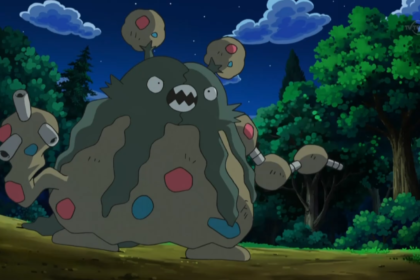


One Comment
Pingback:
March 15, 2018 at 10:46 am